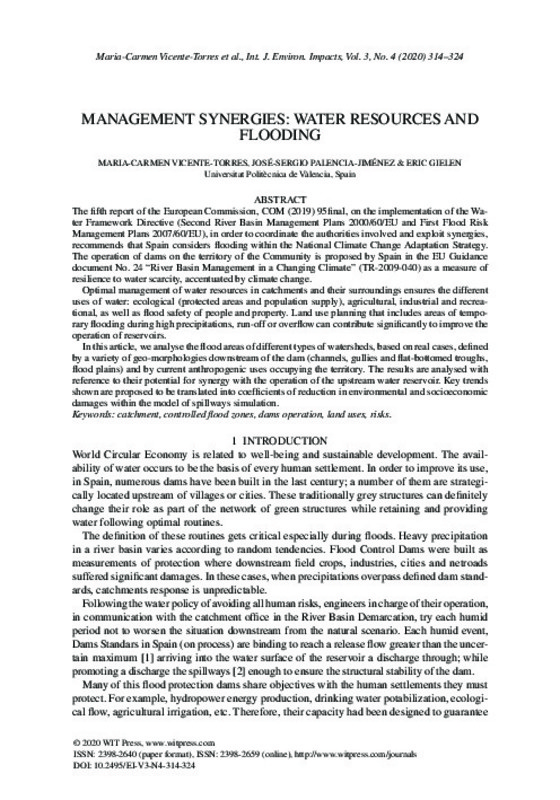JavaScript is disabled for your browser. Some features of this site may not work without it.
Buscar en RiuNet
Listar
Mi cuenta
Estadísticas
Ayuda RiuNet
Admin. UPV
Management synergies: Water resources and flooding
Mostrar el registro completo del ítem
Vicente-Torres, M.; Palencia-Jiménez, J.; Gielen, E. (2020). Management synergies: Water resources and flooding. International Journal of Environmental Impacts (Online). 3(4):314-323. https://doi.org/10.2495/EI-V3-N4-314-324
Por favor, use este identificador para citar o enlazar este ítem: http://hdl.handle.net/10251/161606
Ficheros en el ítem
Metadatos del ítem
| Título: | Management synergies: Water resources and flooding | |
| Autor: | ||
| Entidad UPV: |
|
|
| Fecha difusión: |
|
|
| Resumen: |
[EN] The fifth report of the European Commission, COM (2019) 95final, on the implementation of the Water Framework Directive (Second River basin Management Plans 2000/60/EU and First Flood Risk Management Plans 2007/60/EU), ...[+]
|
|
| Palabras clave: |
|
|
| Derechos de uso: | Reconocimiento (by) | |
| Fuente: |
|
|
| DOI: |
|
|
| Editorial: |
|
|
| Versión del editor: | https://doi.org/10.2495/EI-V3-N4-314-324 | |
| Tipo: |
|









